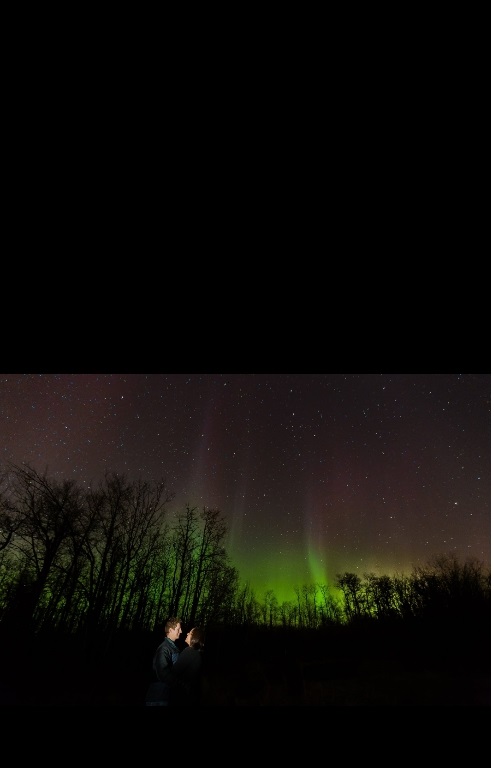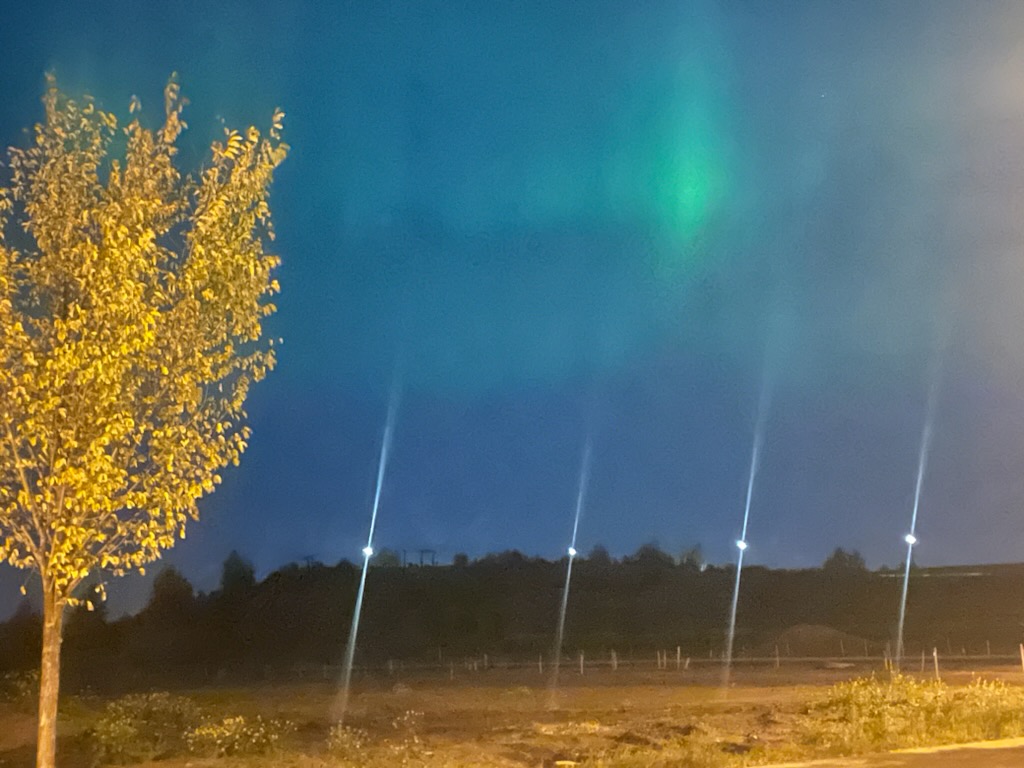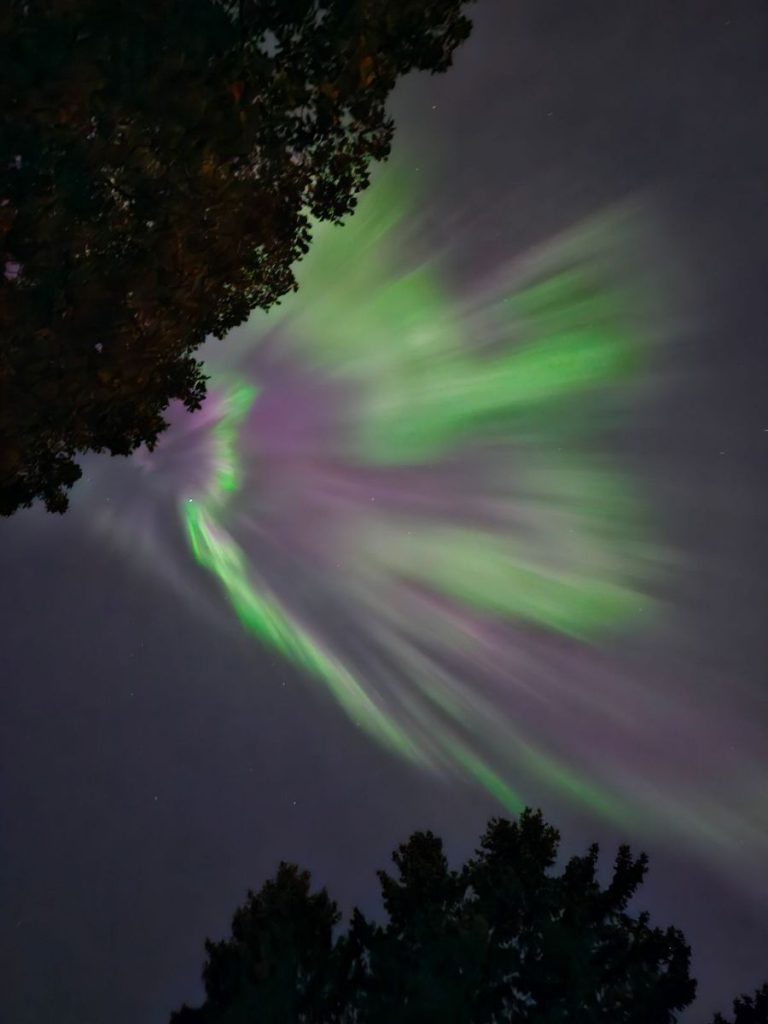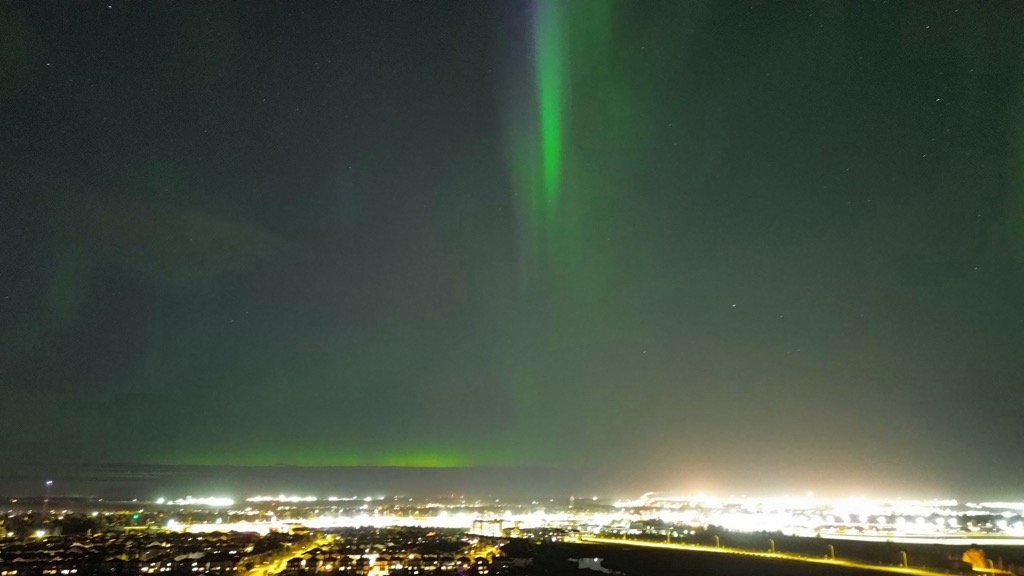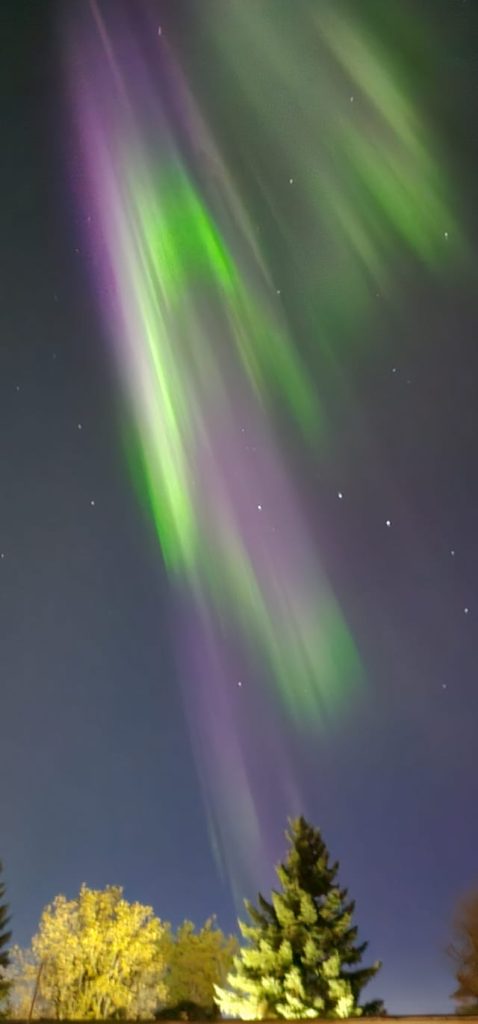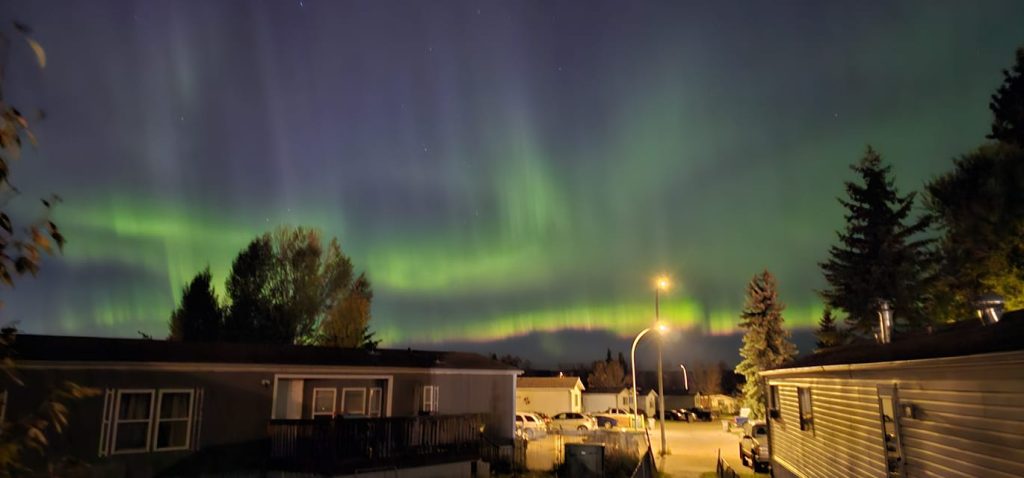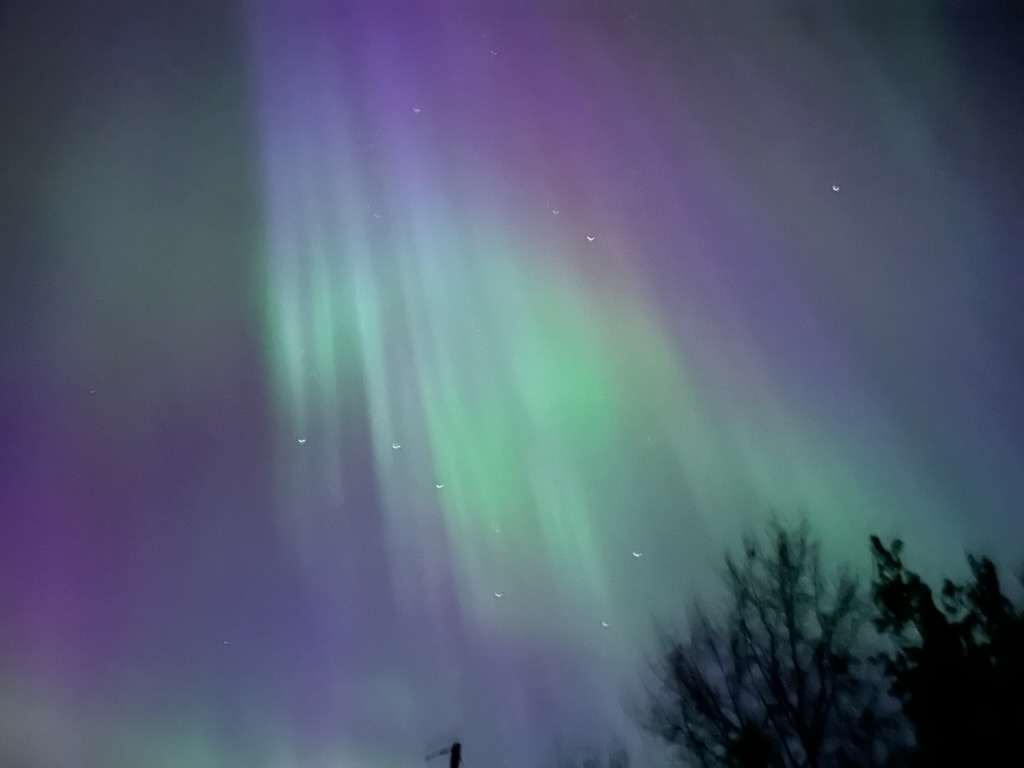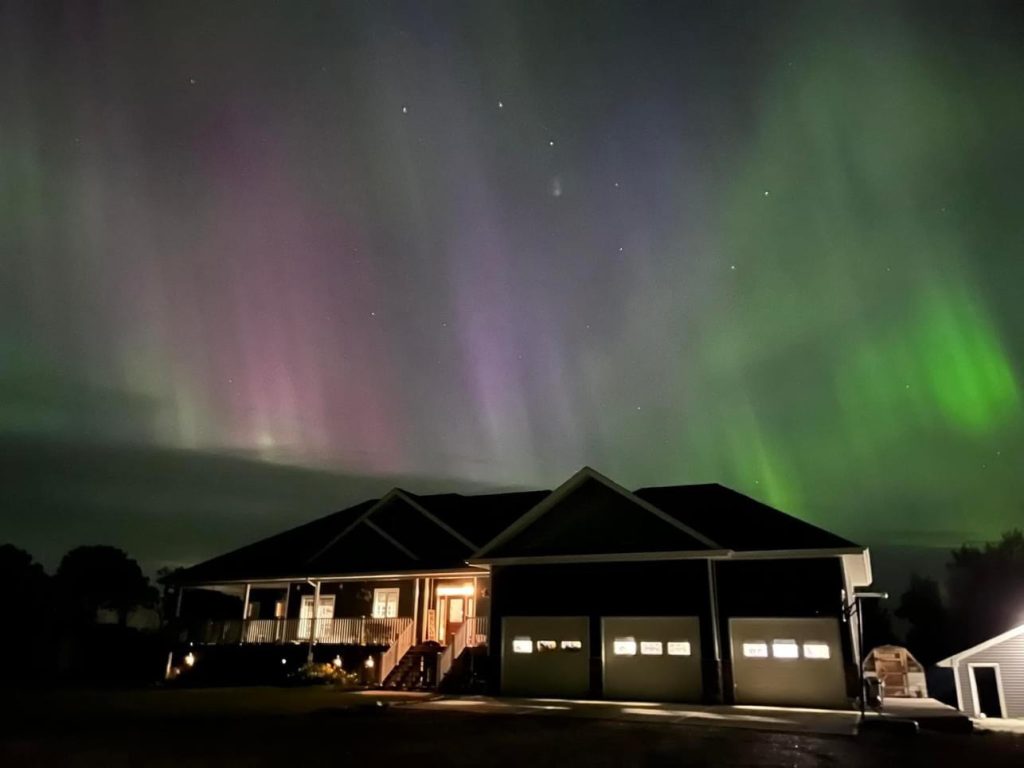When it comes to natural wonders, few can rival the magic of the Northern Lights, also known as Aurora Borealis. We had quite the show last night, and they’re expected to be dancing again tonight in Northern Alberta. I’ve often wondered what the science is behind the Northern Lights, but never really dug into it. So, let’s do it together! We also have some amazing photos from last night sent in from listeners of the show. The Northern Lights are a natural phenomenon that occurs when charged particles from the sun, mainly electrons and protons, collide with gases in the Earth’s atmosphere. These charged particles are carried towards the Earth by the solar wind, a continuous stream of charged particles released by the sun. As these charged particles enter the Earth’s magnetosphere, they follow the lines of the planet’s magnetic field towards the polar regions. When they collide with the gases in the atmosphere, typically oxygen and nitrogen, they release energy in the form of light. This energy creates the beautiful, swirling curtains of light that we associate with the Northern Lights. The colors depend on the type of gas molecules involved in the collision and the altitude at which the collisions occur. Oxygen at lower altitudes (around 100 kilometers above the Earth’s surface) produces green and yellow lights, while higher altitudes (above 320 kilometers) can create red and purple hues. Nitrogen molecules, on the other hand, produce blue and purple colors. Cool, right?!

